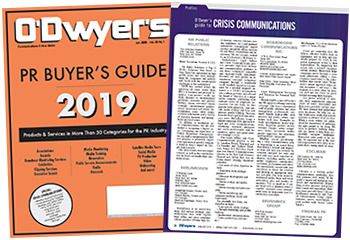 Michael Fineman |
The start of a New Year is typically a time of introspection. It’s time to look back at the past year’s challenges and achievements and then set resolutions and goals for the upcoming year. Hopefully that includes an update your crisis communications plan.
Instead of a system overhaul, I recommend pinpointing areas of your plan for updates throughout the year. In my experience, most crisis communications plans can be improved with more realistic scenario plans, robust measurement systems and training.
Realistic scenario plans
Effective crisis communications plans are dynamic. The media landscape is ever-changing, technologies come and go, public attitudes shift, organizations adapt. A crisis communications plan should reflect the zeitgeist.
|
|
Are you ready for hot-button issues? Conduct a thorough and honest threat assessment. When you hear about the latest corporate scandal, ask yourself if your organization can find itself in that same situation. If the answer is yes, keep a close eye on the situation as it unfolds and integrate your learnings into a scenario plan.
In 2018, many organizations faced challenges related to sexual harassment and assault, diversity and inclusion and security breaches. These issues can arise in any organization. Do you know your organization’s record on these issues? Are your policies current, and can they withstand the glare of the media spotlight?
How quickly can your team mobilize? Most organizations understand, in theory, that they need to respond quickly to crises. But in practice, convening a team, fact-gathering and decision-making can be agonizingly slow. While I advise against knee-jerk responses, I also caution against leaving a void that can be filled by voices not your own. Have a good understanding of how quickly your team can make decisions and plan accordingly. Every minute counts in a crisis.
Robust measurement system
Does your crisis communications team have a system in place to monitor news and social media in real-time? Monitoring news and social media is an active role. It’s not enough just to follow coverage. The monitoring team is responsible for flagging inaccuracies in coverage and ensuring corrections are made before misinformation spreads. The monitoring team should work together with the measurement team to analyze if the messaging strategy is working and determine if adjustments are necessary.
If you’re facing a deluge of media coverage and social media posts, an automated measurement system is important. But it’s even more crucial to have a team to interpret and dimensionalize the data gathered.
Do you know what to measure? Tracking communications outputs such as volume of news articles, social shares and website hits is helpful. But in order to truly gauge impact, a measurement program needs to go deeper and measure outtakes and outcomes.
Output measures what’s been produced. It answers basic questions such as how many news outlets are reporting on the issue, how many times your video has been viewed, how many people visited your microsite.
Outtake measures who was reached and how. It answers questions such as did your communications reach your target audiences? Which communications vehicles are effective? Which messages are resonating with your audiences?
Outcome measures change in behavior and perception. Did your response to the crisis satisfy your stakeholders? Did you retain or recover customers and partners?
Does your measurement system provide perspective? Having perspective helps set realistic expectations. The best-case scenario is for a crisis to be quickly addressed then forgiven and forgotten by an organization’s audiences. But depending on an organization’s history and the severity of the situation, that may not be achievable in the short-term.
Some questions I ask to help clients gain perspective:
How did other organizations weather similar situations? Use your measurement system to analyze crises outside of your organization. If you’re faced with a similar situation, you can set performance benchmarks for your crisis response.
How much goodwill have you built among your audiences? Frequent offenses have a compounding effect, and it will be harder to bounce back after each subsequent crisis.
Training
Crisis plans need to be updated, but so do the skills of the people in charge of executing the plan.
Are your spokespeople comfortable speaking with reporters? Speaking with media, especially during a crisis, can test anyone’s mettle. Media training teaches important skills such as staying on-message, steering conversations, avoiding missteps and effective interview techniques. Conduct mock interviews where your spokespeople practice handling tough questions. Study interviews to learn some Do’s and Don’ts.
Most importantly, study your team’s performance during the mock interviews. Do your spokespeople sound confident? Do they stay calm under pressure? Are they able to deliver messaging effectively?
Put your plan to the test. Don’t wait until a real crisis to test your crisis communications plan. Conduct a tabletop drill with your team to identify weaknesses in your plan. Are roles and responsibilities clearly delineated? Are your protocols efficient? Does your team know what information needs to be collected and shared in order to facilitate good decision-making?
Most importantly, a tabletop drill will test your team dynamics. Can your team work together effectively under duress? Can they stay organized and focused in intense situations? Are adjustments needed to your team structure so it’s more efficient and functional?
Crisis communications plans often languish in unopened folders on people’s hard drives. They’re onerous and intimidating. But facing a crisis with an outdated plan can be downright scary and costly.
***
Michael Fineman is President of Fineman PR.



 There’s a fine line between newsjacking and taking advantage, aka ambulance chasing. Our job as PR professionals is to tread it carefully.
There’s a fine line between newsjacking and taking advantage, aka ambulance chasing. Our job as PR professionals is to tread it carefully. PR firms need to be mindful of ways their work product may be protected by the attorney-client privilege whenever working with a client’s internal legal team or its external legal counsel.
PR firms need to be mindful of ways their work product may be protected by the attorney-client privilege whenever working with a client’s internal legal team or its external legal counsel. Manuel Rocha, former US ambassador and intenational business advisor to LLYC, plans to plead guilty to charges that he was a secret agent for Cuba.
Manuel Rocha, former US ambassador and intenational business advisor to LLYC, plans to plead guilty to charges that he was a secret agent for Cuba. CEO mentoring is an often-overlooked aspect of why CEOs are able to make good decisions, and sometimes make bad ones—all of which intersects with the role and duties of a board.
CEO mentoring is an often-overlooked aspect of why CEOs are able to make good decisions, and sometimes make bad ones—all of which intersects with the role and duties of a board.  How organizations can anticipate, prepare and respond to crises in an increasingly complex world where a convergent landscape of global challenges, threats and risks seem to arrive at an unrelenting pace.
How organizations can anticipate, prepare and respond to crises in an increasingly complex world where a convergent landscape of global challenges, threats and risks seem to arrive at an unrelenting pace.


 Have a comment? Send it to
Have a comment? Send it to 
No comments have been submitted for this story yet.